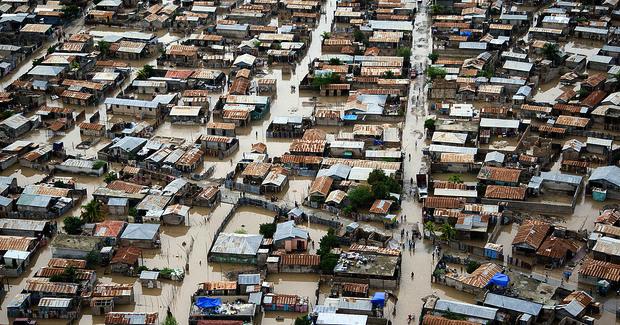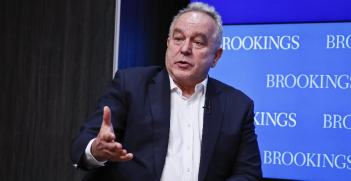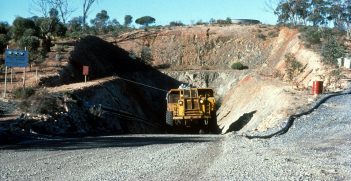Preparing for Disaster

In the wake of Hurricane Matthew, the Red Cross released the World Disasters Report 2016 on 13 October. The report shows that disasters killed more than 30,000 people in 2015 and cost nearly $100 billion, strongly suggesting that disaster management needs a new approach.
It’s time to rethink disaster management. Too much is spent on meeting today’s needs and nowhere near enough on saving tomorrow’s lives. By investing in resilience measures such as ensuring infrastructure can handle natural disasters, it’s possible to save more lives, protect public health and minimise disruption to society.
Even as Australians clean up the debris from howling wind storms and sudden floods in their own backyards, many have been spared the worst. Over the last weeks there have been the tragic images of Hurricane Matthew’s fury in Haiti, Cuba and the United States where thousands are in mourning after losing loved ones in the wake of the hurricane.
According to the Red Cross World Disasters Report 2016, released today, disasters killed 32,550 people in 2015, affected 108 million more and cost the world A$92.5 billion.
The global community doesn’t cope with disasters very well. Too much is spent on clean up and recovery because nowhere near enough is spent on prevention or mitigation.
Last year’s natural disasters cost Australia at least $9 billion, according to research commissioned by the Australian Business Roundtable for Disaster Resilience and Safer Communities. That’s expected to double by 2030 and reach $33 billion per year by 2050.
Yet barely $50 million is spent preparing for these disasters, even though they can be seen coming.
This trend is reflected around the world. The World Disasters Report states that just one out of eight dollars allocated to disaster management is spent on reducing and preventing risks. This makes no sense when global economic losses from extreme weather events now reach $197-263 billion dollars annually.
Let’s rebalance the budgets to prevent tomorrow’s needs instead of just meeting needs today. This won’t just keep costs down. It will save lives, prevent needless suffering, protect economies, maintain livelihoods and keep people out of poverty.
The Australian Business Roundtable research found that every dollar spent on disaster risk reduction saves three to eight dollars in the costs of recovery. The Productivity Commission has also called for an increase in disaster mitigation measures.
The World Disasters Report takes this a step further, arguing that investing in resilience is the best way to save lives and money.
‘Resilience’ can be tricky to define precisely. In essence, it’s what helps people adapt to, cope with and recover from adversity. It can be as personal as a family emergency plan, or as large-scale as a citywide approach to building. It includes disaster mitigation (building flood levees or forest fire management, for example) but goes further to encompass public health, community education, psychological wellbeing, economic stability and recovery.
The evidence is stacking up that it’s a wise investment, whatever form it takes.
We’ve just seen how pre-emptive evacuations across the United States helped keep the death toll down when Hurricane Matthew hit. The World Disasters Report cites many more examples: from flood mitigation strategies in Somalia to safety net programs in Kenya preventing poverty in drought.
It’s time to ramp up efforts in Australia. In line with the Productivity Commission’s 2015 report, Australian Red Cross is calling for a significant national increase in investment in disaster risk reduction and community resilience. This should apply for Australian communities as well as for Australia’s overseas aid program.
In The Guardian last week, Prime Minister Malcolm Turnbull said: “We need to spend more in advance so that we have to spend less after the rainfall events or the bushfire events that occur so it’s important to invest in mitigation, in advance.”
Everyone has a part to play in this investment.
Measures like building flood levies, reinforcing bridges, identifying hazards and strengthening community networks can greatly reduce the impact of disasters. Red Cross is asking all levels of government to prioritise these measures.
Businesses would benefit from understanding how disasters will affect their operations, investing in reducing risks and providing incentives to their customers to do the same.
Emergency management agencies, including Red Cross, have an important role to play. We need to help all Australians make informed decisions about their risks and what they can do to build resilience.
Every family can find its own way to prepare for emergencies: identifying what they value most and how to protect it, building social connections, staying informed and making a plan. Red Cross has a simple, four-step plan to help people protect what they value most.
Working together is the key to success. There is a need for more initiatives like the Australian Business Roundtable, in which leaders from major businesses work together with Red Cross to make communities safer.
Meanwhile, let’s keep talking about disaster preparation and resilience. Preparing for a flood, fire or hazard should be embedded in the culture, as commonplace as wearing a seat belt in a car.
Australia’s overseas aid program needs a similar approach, because disasters set back sustainable development. Much more could be invested in practical ways to protect lives, homes and families: from disaster drills and evacuation plans, to public health, weather-resistant housing and livelihoods. Most importantly, locally-generated ideas are needed to make communities safer and better able to cope with adversity.
Natural disasters are increasing in scale and frequency, compounded by a changing climate. Without smarter ways to reduce risk, they’ll soon cost far more than Australia can bear. Let’s invest, today, in a safer future for tomorrow.
Judy Slatyer is the chief executive officer of Australian Red Cross. She is formerly the chief operating officer of the World Wide Fund for Nature (WWF) and the CEO of Lonely Planet Publications.
This article is published under a Creative Commons Licence and may be republished with attribution.





